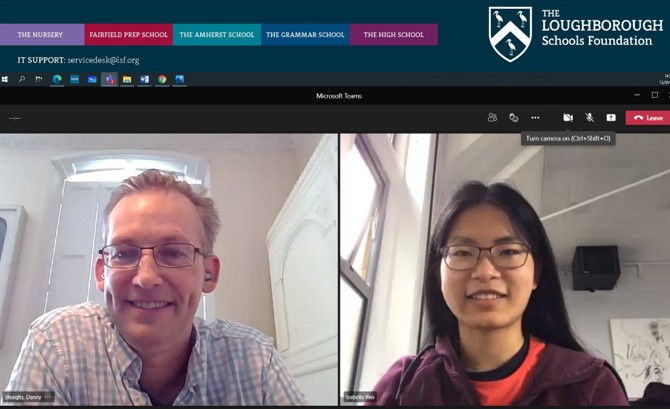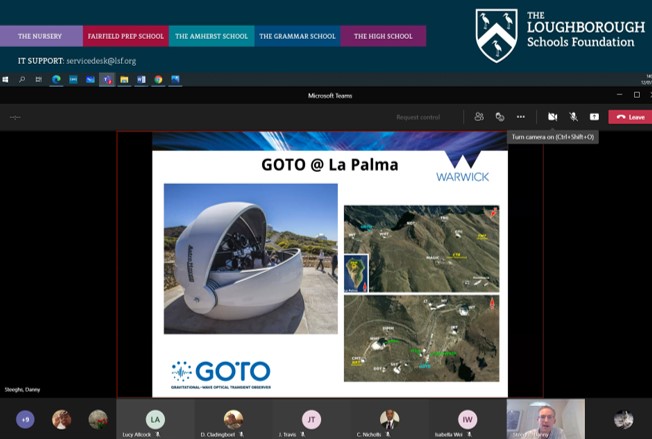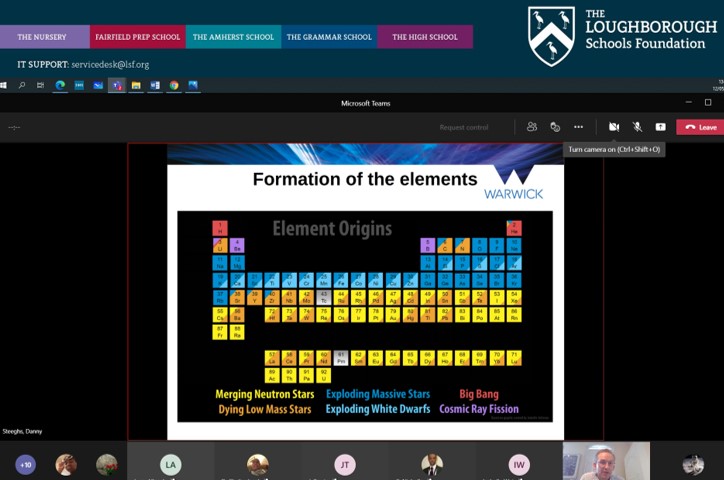LHS Physics Society – Talk by Dr Steeghs

LHS Physics Society virtually welcomed Dr Danny Steeghs, Head of Astrophysics at Warwick University to the High School on Thursday lunchtime.
In an event organised by RanRan Wei, a year 12 pupil at the High School, Dr Steeghs kindly gave up his valuable time to inform and educate the pupils and staff in attendance of his cutting-edge work in identifying the sources of Gravity Waves across the universe.
He explained how, in ‘conventional’ astrophysics information can be gleaned about the make up of distant stars and galaxies by examining different parts of the electromagnetic spectrum, such as Gamma rays, X Rays and near infra-red.
He went on to explain how, in addition to electromagnetic waves, astrophysicists are now able to detect previously elusive ‘Gravity Waves’ whose presences was predicted over a century ago by Einstein’s General Theory of Relativity, but who’s existence was only confirmed in the past few years. Gravity waves can be best thought of as ripples in the space-time continuum and they are best detected when created by events involving objects of very large masses interacting. When these waves reach the detectors on Earth, their effect may only last for a tiny fraction of a second as they pass us
Dr Steegh informed us that events that create detectable gravity waves are surprisingly common events across the whole universe, usually involving black holes or neutron stars. It is pairs of neutron stars ‘colliding’ that provide astrophysicists with the best opportunities to study gravity waves, and at the same time providing an insight into the structure of these extremely dense stars. (we also learnt that the heavier half of elements found on Earth are likely to have been formed in these collisions between neutron stars.
Dr Steegh then went on to explain how his work fits in to this world-wide study. He combines physics, mathematics, computing and astronomy in his work, leading a team that is creating computer-controlled robotic telescopes that react to detected gravity waves and then point the telescopes at the source of the waves to detect other radiation coming from that event. Attendees were all fascinated to hear that his team are working on augmenting the robotic control with Artificial Intelligence and machine-learning in the decision-making process in order to capture the best data before it is too late. This was a wonderfully inspiring real-world example of collaboration across scientific disciplines, counties, continents and a really productive interaction between theoretical physics and cutting-edge technology.


